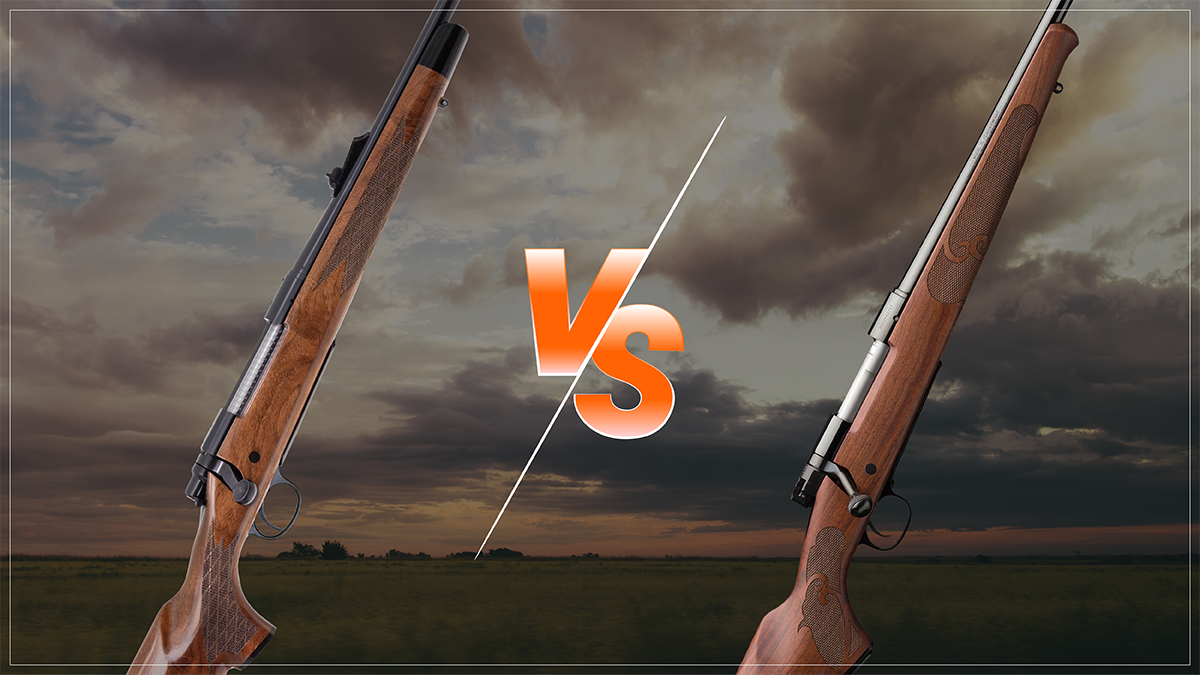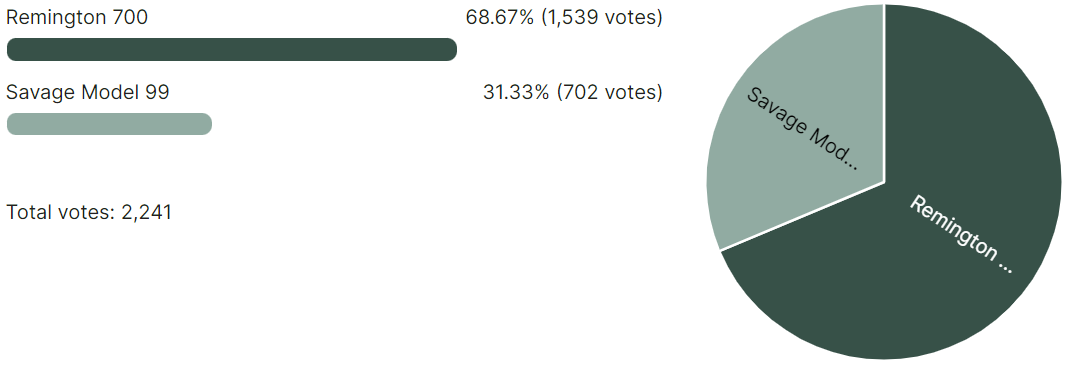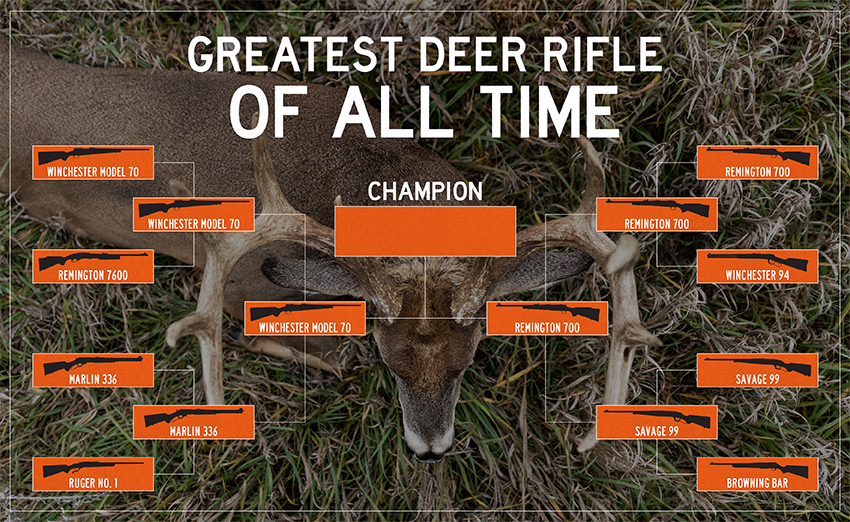
The semi-final round of October Madness 2024 is over, and the Remington 700 and Winchester Model 70 have come out on top!


Vote now in this Championship Round for the rifle you believe is the Greatest Deer Rifle of All Time. Voting will run until Sunday, October 6th, at 11:59pm, so you have plenty of time to send this to your friends to make sure your favorite rifle comes out on top. If you'd like a little more information before casting your vote, check out the cheat sheets on each rifle below. And feel free to explain your vote in the comments (or why the other side is dead wrong).

Don’t forget to vote in the other matchups, which you can do here.
Remington 700
If you can think of a centerfire rifle cartridge, you can probably find a Remington 700 that shoots it. Some of the more popular ones include.
History
Ask any hunter to name the most famous bolt-action rifle of all time, and chances are they’ll say the Remington 700. The company claims that more 700s have been produced than any other bolt gun since the rifle’s introduction in 1962, and I don’t know anyone who would disagree.
The Remington 700 traces its roots all the way back to the M1917 Springfield, which was used extensively in World War I. The Remington Model 30 took its cues from this military rifle, and the Remington Model 721 was an updated version of the Model 30. But neither rifle did well commercially against Winchester’s Model 70, so Big Green went back to the drawing board. They came up with the Model 700, which was cheaper to make but still maintained tight tolerances and high quality.
The 700 was an immediate success, and its various configurations have been widely adopted by hunters as well as American military snipers, whose M24 and M40 rifles are based on the Model 700 design.
Features
The Model 700 has been offered in so many barrel, stock, and trigger configurations that it’s tough to summarize the rifle’s many potential features. Rifles boast capacities of three, four, and five rounds in blind internal box and hinged floorplate magazines, and many companies produce stocks that can accept detachable magazines.
The heart of the 700 is the action, which Remington has claimed is the strongest on the market thanks to its “three rings of steel” (bolt head, receiver, and barrel) that enclose the cartridge prior to firing. Other features of the action include dual opposing lugs, a c-clip extractor, and a plunger ejector. While various companies offer aftermarket triggers for the 700, Remington has partnered with Timney Triggers to provide upgraded versions of their factory triggers.
Availability
You can still purchase a factory-new Model 700 from Remington (now operated by the holding company RemArms). These are available in 14 variants featuring different barrel and stock options, and can be found in the $600 to $1200 range. Used Remington 700’s are ubiquitous–meaning, you could throw a dart blindfolded in a gun store and probably hit one. Many gun makers have also used the Remington 700 action footprint to produce stocks, triggers, receivers, and barrels, so finding aftermarket accessories for a 700 is a piece of cake.
Winchester Model 70
The Model 70 has been available in just about every centerfire cartridge imaginable, so there’s no point in listing them all, but here are some currently available and a few coveted oldies.
History
One of the longest tenured bolt action rifles still available, the Winchester Model 70’s endurance speaks volumes to its success and reliability. Of course, its most faithful followers swear that the Pre-64 models possess a level of superiority to those that come after. Prior to 1964, the Winchester Model 70’s bolt featured a Mauser-style, or controlled feed, action. After that, Winchester decided to cut costs and go with a push feed action. Rifle hunters lamented this change (they still do), claiming that the push feed would allow for more malfunctions. But even Jack O’Connor conceded that alterations to the Model 70 proved beneficial, if not just as reliable.
Features
Besides the differences in the Pre-64 Model 70 and those after, most of these rifles feature a three-position safety, hinged floorplate, and push feed action. Newer Model 70s, however, now harken back to the Pre-64 model with a classic controlled feed claw extractor. To be honest, both actions offer great reliability and choosing one is largely a subjective matter.
The Model 70 also has a hammer forged, free-floated barrel, blade ejector, and recessed target crown. These premium features include a premium price tag, but there’s a reason the Model 70 was coined the “Rifleman’s Rifle,” and the title remains relevant now.
Availability
The Model 70 still thrives today and there are so many iterations of the rifle, that choosing one might be a daunting task. However, that’s good news. From the Featherweights and Super Grades to the Long Range MB models with synthetic stocks and fluted barrels, you can find a model that fits even the most specific needs. Prices for the Winchester Model 70s start around $1200 if you want to buy new. Of course, you can find a reliable, well-used Model 70 for about half the price if you do some pawn/gun shop surfing. Excellent-condition Pre-64 Model 70s go upwards of a few grand. My long list of rifle regrets includes a Model 70 Featherweight in .270. Like a lot of my old hunting rifles, I had little invested in the gun, but talked myself into selling it because it wasn’t my cartridge of choice.








